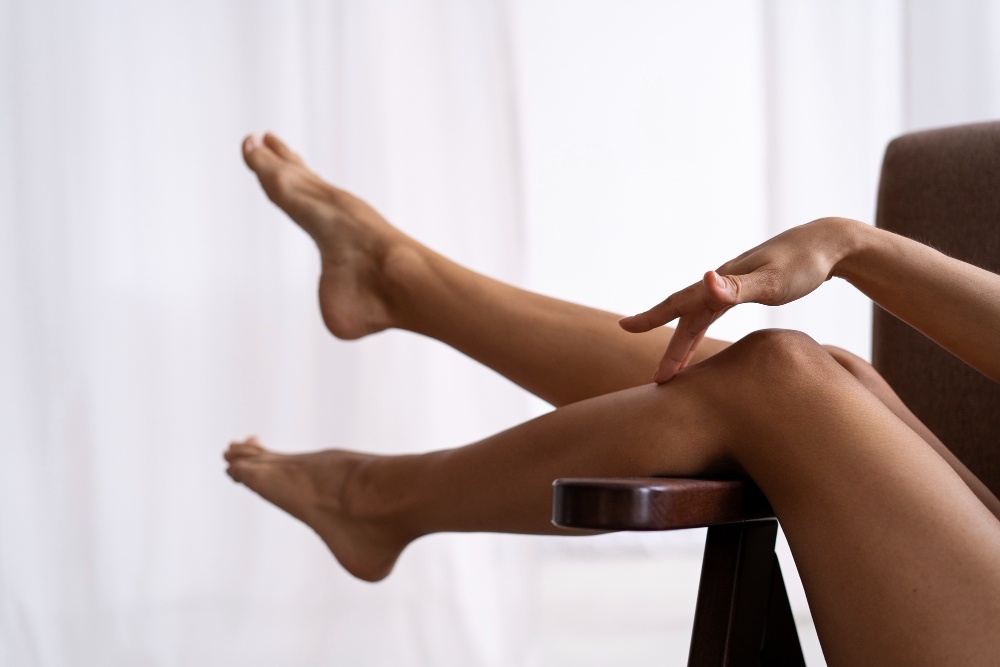Waxing is a top method of removing hair that involves the application of wax to the hair and skin, followed by the removal of the wax along with the hair. This technique provides long-lasting and smooth results by completely removing the hair from the root, unlike shaving. While many people prefer to have their waxing done by professionals at salons, it is possible to safely and effectively perform waxing at home with the right supplies and techniques. This article reveals a comprehensive overview of the essential tools and supplies needed for home waxing, as well as tips for proper preparation, application, removal, and aftercare.
Supplies Needed for Waxing at Home
Before performing waxing at home, it is crucial to gather the appropriate supplies. The primary wax product required is either hard wax or soft wax. Hard waxes are applied in a thicker layer and removed after they have hardened and become tacky. They are particularly suitable for coarser hair in areas such as the legs. Soft waxes, on the other hand, remain sticky when applied and require muslin strips for removal. They are more effective for finer hair and sensitive areas. Additionally, some other supplies needed for waxing include:
- Wax warmer - to melt hard wax to the ideal temperature for application
- Applicators - popsicle sticks, spatulas for spreading wax
- Muslin strips - to remove soft wax
- Pre-wax oils or powders - to help prep and soothe skin pre-wax
- Post-wax lotions or gels - to soothe and moisture skin
- Bowls, scissors, gloves - for prepping wax and cleaning up
Ensuring you have all the necessary supplies for your waxing session is key to achieving a smooth and comfortable process at home.
Tips for Preparing to Wax
Prior to applying wax to the skin, take the necessary steps to adequately prepare the desired area for waxing. Begin by exfoliating using a scrub, dry brush, or alternative method to eliminate dead skin cells and promote closer waxing to the hair roots. Use a pre-wax oil or powder to further prepare and soothe the skin, facilitating proper adhesion of the wax. Ensure that the hair being waxed is of the optimal length, which typically ranges from 1/4 to 1/2 an inch. Hair that is too short may pose difficulties in effectively removing it with wax.
Choose the appropriate wax for the task by taking into account factors like hair texture and location. Coarser hair on the legs and arms is best tackled with hard wax, while softer wax is ideal for more delicate areas such as the face, underarms, and bikini line. Prior to application, heat the hard wax to the correct temperature in a wax warmer, ensuring it spreads easily without causing burns. Always conduct a temperature test by applying a small amount of heated wax on your wrist before using it on a larger area. By gathering all necessary supplies and properly preparing the area, you can ensure a smoother waxing experience.
How to Apply and Remove Wax
After preparing, apply wax in the direction of hair growth, using a thin and even layer. Ensure that the wax does not harden before applying the muslin or paper strip. For soft wax, firmly press the strip over the wax and then quickly pull it off in the opposite direction of hair growth. Make sure to pull the strip off as close to the skin as possible, flicking the wrist at the end of the pull for optimal results.
For hard wax, apply a thicker layer and allow it to harden on the skin. Once hardened, flick it off starting at one end. Use tweezers afterward to remove any stubborn hairs that may have been missed. Employing the correct technique for wax application and removal is crucial for minimizing pain and preventing skin irritation. Immediately after waxing, apply a soothing aloe-based gel, hydrocortisone cream, or oil to moisturize and calm the skin. Avoid sun exposure as well as tanning for at least 24 hours following waxing to prevent irritation on sensitive skin.
Tips for Safe and Effective Waxing
Proper technique and aftercare are essential for safe and effective at-home waxing sessions. Always disinfect all tools, surfaces, and bowls used for waxing to prevent the spread of bacteria and infection. Avoid waxing over sunburned skin, rashes, or areas with cuts, stitches, or skin infections. When applying wax, work on small sections, hold the skin taut and remove wax strips.
Avoid waxing the same area multiple times during a session to prevent skin damage. Allow your hair on the target area to grow to the appropriate length between waxing sessions, typically 3-6 weeks. Use exfoliating scrubs or dry brushes to prevent ingrown hairs. Apply post-wax tend skin creams that contain soothing ingredients like vitamin E or aloe vera. By following these handy precautions, you can enjoy the benefits of convenient and affordable at-home waxing safely.
Conclusion
With the right supplies and techniques, it is possible to effectively remove hair at home through waxing. Essential items include hard or soft wax, applicators, strips, pre and post-wax skincare products, and other tools for safety and easy clean-up. Properly preparing the skin, applying and removing wax with the correct form, and post-care are crucial steps for optimal results. With practice and patience, waxing at home can be a safe, convenient, and cost-effective hair removal option. Take precautions, avoid excessive waxing, and prioritize skin health to prevent damage or irritation.


No comments yet